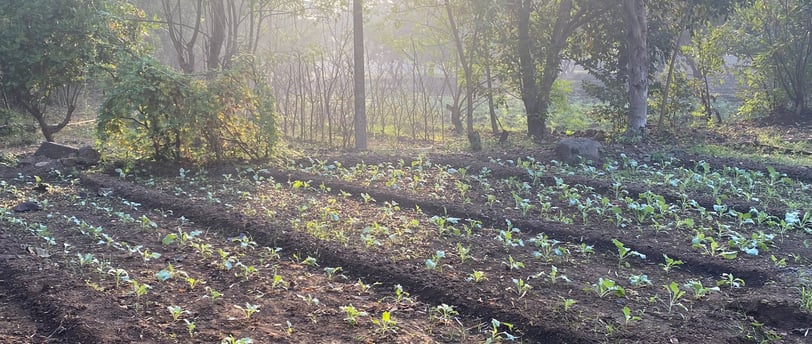Connecting Farms: Wireless Sensor Networks Reshaping Farming Landscape
Revolutionizing agriculture with wireless sensor networks, Connecting Farms transforms the farming landscape for enhanced efficiency and sustainability.
Rishita Chatterjee
1/31/20243 min read


Diversification in farming has brought about a plethora of changes and benefits to the farmers, at the same time accompanied by Wireless sensor networks it has acquired a new meaning and rendered a new meaning to the farming landscape. Diversified farming activities encompass a wide range of agricultural practices, which include crop cultivation, livestock rearing, and other complementary farming operations. The invention of Technology and Digitization has reformed connecting and enhancing all these activities in a hassle-free manner.
For crop cultivation, the sensor networks enable the farmers to optimize the planting, irrigation, and harvesting activities through sheer and clear data-driven insights. Livestock management benefits from digitization for monitoring the health, nutrition, and breeding of animals and poultry birds. Additionally, smart and intelligent sensors streamline tasks like irrigation feeding and other Farm Management activities.
As the adage goes, “Agriculture was the first occupation of Man, and as it embraces the whole earth, is the foundation of all other industries”. In this regard, Agriculture is the basis of all other industries and among those, the evolution of Digitization concerning the introduction of wireless sensor networks is praiseworthy. Connected farming is a concept that has been very popular in Geographies, where advanced technologies such as drones, sensors, and remote satellite imagery are used to optimize and automate agricultural processes. It involves the twin synthesis of collecting and analyzing data on various environmental parameters like weather, soil, moisture, and equipment to make prompt and informed decisions to improve farming efficiency. This connected farming mechanization aids in the reduction of waste, minimum use of resources, maximization of output, increase in productivity, and solving labor issues.
Connected farming mingled with Digitization or the advent of technology helps farmers to improve their agricultural operations, reduce costs, and enhance their sustainability to be more competitive in the realm of growing agricultural advancements. In the scenario of a Diversified cropping pattern of a farm, the connected farming technologies automate many aspects of farming operations, reducing the need for manual labor and increasing efficiency. By optimizing resource use, and improving yield, connected farming technologies can reduce waste and lower costs for the farmers. Wireless sensors allow farmers to target inputs more specifically such as pesticides and fertilizers for example.
When we talk about livestock management, the other face of a connected farm, digitization (use of wireless sensors) Is undoubtedly the cherry on the cake. With the use of wireless sensor networks, the farmer can monitor their crops and livestock simultaneously for extended hours collect real-time data, and act according to the need of the hour. This approach enables the farmers to identify the trend that impacts the quality and sustainability of their products before they start facing the consequences. The management and monitoring of the health, and behavior of the animals on a farm, of the birds on a poultry farm, Actions can be taken right on time based on the live data which primarily is obtained from the Physical data of the Animal or Bird. This data helps to monitor the health of the animal which further increases the quality of the produce.
Digitization in connected farming solves the intervention of manual labor issues by automating and optimizing various agricultural tasks. The wireless sensors enable precision monitoring and control of farming activities. The connected farming systems can automate tasks such as planting, harvesting, and so on thereby reducing the reliance on manual labor, at the same time connecting under a single roof all the farming operations of a farmer. The farmers can use the data-driven information to make informed decisions related to crop management, and resource allocation, which minimizes the need for constant physical monitoring. The farmers can also remotely monitor their connected farming activities through the sensors, allowing them to identify potential issues and take corrective actions without being physically present.
We should remember that the agroindustry, like any other industry, must evolve to build resilience to an ever-changing landscape with a growing number of challenges. Given this promise, connected farming may be the promising rain shower to farmers after a period of severe drought. It will empower farmers to do “more with less” and make their operations more resilient without taking any toll on physical presence or physical intervention and making them more scientific and data-driven.
